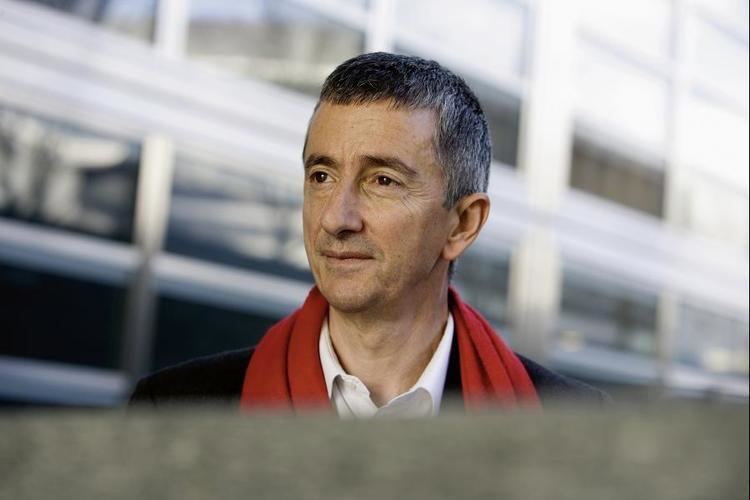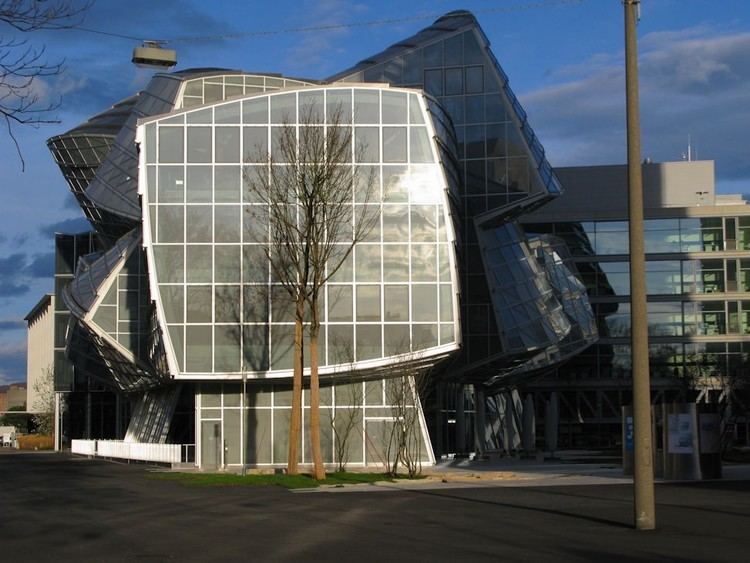Name Vittorio Lampugnani | Role Architect | |
 | ||
Books Etwas im Gefühl der Liebe Similar Gabriele Tagliaventi, Mario Occhiuto, Stefano Boeri | ||
Vittorio magnago lampugnani professor f r geschichte des st dtebaus eth zum architekt der zukunft
Vittorio Magnago Lampugnani (born 1951, in Rome, Italy) is an architect, architectural theorist and architectural historian as well as a professor emeritus for the History of Urban Design at the Swiss Federal Institute of Technology Zurich (ETH Zurich). He practices and promotes a formally disciplined, site- specific, and aesthetically sustainable form of architecture, one without modernist or postmodernist extravagances. As an author and editor of several acclaimed works of architectural history and theory, his ideas are widely cited.
Contents
- Vittorio magnago lampugnani professor f r geschichte des st dtebaus eth zum architekt der zukunft
- Intervista ai proff marco de michelis e vittorio magnago lampugnani
- Academic education
- Teaching and research
- Architectural work
- Exhibitions
- Awards and memberships
- Publications
- References

Intervista ai proff marco de michelis e vittorio magnago lampugnani
Academic education

Attended the Swiss primary school in Rome, then the German grammar school in Rome. From 1970 to 1973, he studied architecture at the University La Sapienza in Rome as well as at the University of Stuttgart. Lampugnani graduated in 1973 and completed his doctorate at the University of Stuttgart in 1977. In 1983, he acquired the Dottore in Architettura at the University of Rome.
Teaching and research

Between the years of 1974 to 1980, Lampugnani was a research assistant for architecture and design at the University of Stuttgart at the chair of Jürgen Joedicke. From 1981-1982, he was awarded a German Academic Exchange Service (DAAD) scholarship under the Berlin program of artistic exchanges. Following from 1981 to 1983, Lampugnani also held a research fellowship from the American Council of Learned Societies at Columbia University in New York. In 1983, he was appointed professor at the International Summer School of Fine Arts in Salzburg. From 1984 to 1985, he was a visiting professor at the Department of Architecture, at the Graduate School of Design at Harvard University in Cambridge, Massachusetts. From 1985-1986, he was a fellow at the Berlin Institute for Advanced Study. In 1990, Lampugnani was appointed professor to the State University of Fine Arts (Städelschule) in Frankfurt am Main. From 1994 to 2016, he was a full professor for the History of Urban Design at the Swiss Federal Institute of Technology Zurich (ETH Zurich). From 1998 to 2001, Lampugnani was appointed dean of the Department of Architecture at ETH Zurich, after which he was the vice-dean of the faculty (2001-2003). From 2005 to 2007, he was appointed dean of the Network City and Landscape (NSL) at ETH Zurich. In the years between 2002 and 2007, Lampugnani founded and directed the postgraduate program «Urban Forms. Conditions and Consequences». From 2007 to 2010, he was the director of the working group «Spatial Sciences in the ETH Domain». Since 2008, he was deputy dean, two years later in 2010, he was appointed dean of the Institute for the History and Theory of Architecture (gta). During his tenure at ETH Zurich, Lampugnani has given numerous international lectures as well as held visiting professorships at institutions including: Harvard University, Escuela Técnica Superior de Arquitectura at the University of Navarra in Pamplona, and the Faculty of Architecture at the Politecnico in Milan.
Architectural work

From 1980 to 1984, Lampugnani was a scientific consultant to the International Building Exhibition Berlin (I.B.A.) for new construction areas. In 1980, Lampugnani opened his first architectural practice first in Berlin, then in Milan (Studio di Architettura) and later in Zurich (Baukontor Architekten). Among his most important projects:
These and other projects have been published in the most significant architecture magazines, amongst them Casabella, Domus and Lotus international, Milan, Arquitectura Viva, Madrid, and AMC (Architecture, Mouvement, Continuité), Paris. He was member of various jurys for architecture competitions and prizes, among them the Praemium Imperiale, Tokyo (consultant); the Mies van der Rohe Award for European Architecture, Barcelona (chairman) and the Green Prize for Urban Planning, Harvard University.
Exhibitions
1984 Lampugnani directed the exhibition «The adventure of ideas in architecture 1750 - 1980» at the New National Gallery of Berlin. (1985 the exhibition was shown under the title «L'avventura delle idee nell'architettura 1750-1980» at Palazzo della Triennale in Milan.) In 1987, followed the exhibition «Le città immaginate: un viaggio in Italia» (Imagined cities: a journey through Italy) also at the Palazzo della Triennale (with Vittorio Savi). From 1990 to 1995, Lampugnani was appointed director of the German Architecture Museum in Frankfurt am Main, where he organized numerous exhibitions, symposia and lecture series. In addition, he curated the exhibition «Rinascimento. Da Brunelleschi a Michelangelo: La rappresentazione dell'architettura» in 1994 at the Palazzo Grassi in Venice (with Henry Millon). Between 1995-96, the exhibition travelled to the National Gallery of Art (Washington DC), the Musée des Monuments historiques (Paris), and the Altes Museum (Berlin). Several of his architectural works have been exhibited in solo and group exhibitions at the Venice Biennale.
Awards and memberships
Since 1978, he is member of the Baden-Württemberg Institute for Architects, since 1979 of the Deutscher Werkbund. In 1987, Lampugnani was prize awarded by the Comité International des Critiques d'Architecture. He has been a member, since 1991, of the Association of German Architects, and, since 1995, of the Association of Swiss Architects. From 1992 to 1996, member of the architectural advisory board of the Deutsche Bank, Frankfurt am Main. From 1999 to 2002, member of the scientific advisory board of the Triennale die Milano and the Musée d’Architecture Français in Paris. From 2000 to 2004, member of the advisory board of the Collegium Helveticum in Zurich, and the Swiss Science and Innovation Council in Berne. From 2001 to 2014, member of the Steering Committee of all Novartis campus sites. From 2012 to 2014, member of the advisory board of Munich Airport. Since 2001 member of the Internationale Bauakademie Berlin, as well as of the scientific committee of the Oskar von Miller Forum in Munich. In 2006, he was awarded with the prize of the Union of Architects e.V., Munich for his book «Die Modernität des Dauerhaften». In 2009 and 2011, he was awarded with the Golden Owl for his exceptional teaching at ETH Zurich, in 2010, Lampuganni received the Bruno Zevi Book Award from the International Committee of Architectural Critics and the Heinrich-Tessenow-Medaille (2017).
